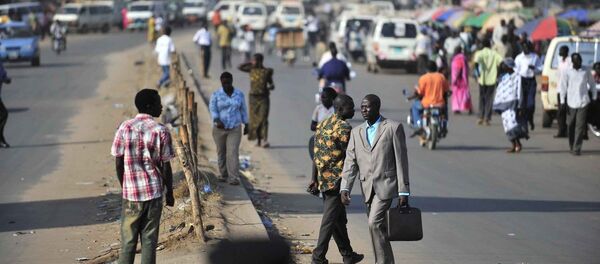
People going about their businesses at a street in Juba. | Photo: Courtesy.
A new United Nations population index has projected the lowest global population growth in 70 years, with South Sudan’s population faltering at only 11 million people.
The world population is expected to rise to 8 billion people this year, according to the latest projection released this week.
The current population of South Sudan is projected at 11,458,927 as of Tuesday, according to the statistics based on elaboration of the UN’s data.
South Sudan’s population figure amounts to 0.14% of the total world population, ranking the country at number 84 among populated countries.
According to the new projection, only 2.7 million people in the country live in the urban areas, and Juba has the highest population of 450,000 people whereas the least populated area is Tonj with around 17,000 people.
The country’s demographics put the life expectancy among the lowest in the world at 58.7 years.
It also ranks at number 8 as one of the countries with the highest infant mortality rates at 58.6
Meanwhile, the UN data indicates that the global population is growing at its slowest rate since 1950, having fallen to less that one per cent in 2020.
The latest UN projections suggest that the world’s population could grow to around 8.5 billion in 2030 and 9.7 billion in 2050, before reaching a peak of around 10.4 billion people during the 2080s.
The population is expected to remain at that level until 2100.
In the UN’s World Population Prospects 2022 report, India is on course to overtake China as the world’s most populous country in 2023.
The COVID-19 pandemic is said to have had an effect on population change in some countries, due to successive waves of the pandemic that may have produced short-term reductions in numbers of pregnancies and births.
The report declares a drop in fertility rates across the world in recent decades for many countries, with two-thirds of the global population under a lifetime fertility below 2.1 births per woman.
This according to the UN, is roughly the level required for zero growth in the long run.
John Wilmoth, Director of the Population Division of the UN Department of Economic and Social Affairs said the global population will not have a significant increase despite actions by the governments to reduce fertility.
“Further actions by Governments aimed at reducing fertility would have little impact on the pace of population growth between now and mid-century, because of the youthful age structure of today’s global population,” Wilmoth said.
“Nevertheless, the cumulative effect of lower fertility, if maintained over several decades, could be a more substantial deceleration of global population growth in the second half of the century.”
In 61 countries or areas, the population is expected to decrease by at least one per cent over the next three decades, as a result of sustained low levels of fertility and, in some cases, elevated rates of emigration.
About eight countries namely the Democratic Republic of the Congo, Egypt, Ethiopia, India, Nigeria, Pakistan, the Philippines and Tanzania are said to contribute more than half of the projected increase in the global population up to 2050.
On the other hand, countries of sub-Saharan Africa are expected to contribute more than half of the increase anticipated through 2050.
Support Eye Radio, the first independent radio broadcaster of news, information & entertainment in South Sudan.
Make a monthly or a one off contribution.
Copyright 2024. All rights reserved. Eye Radio is a product of Eye Media Limited.